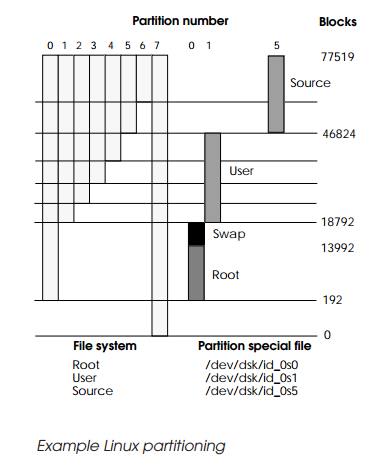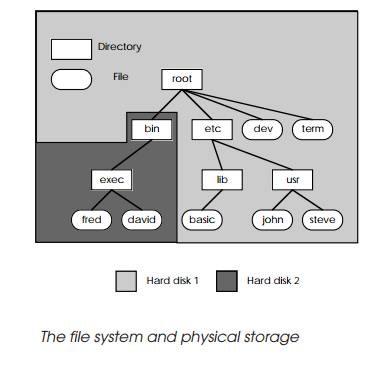Chapter: Embedded Systems Design : Real-time operating systems
Disk partitioning
Disk partitioning
The concept of disk partitioning is simple: the closer the blocks of
data are to each other, the quicker they can be accessed. The potential
distance apart is dependant on the number of blocks the disk can store, and
thus its storage capacity. Given two hard disks with the same access time, the
drive with the largest storage will give the slowest performance, on average.
The principle is similar to that encountered when shopping in a small or large
supermarket. It takes longer to walk around the larger shop than the smaller
one to fetch the same goods.

Linux has the option of partitioning large hard disks so the system sees
them as a set of smaller disks. This greatly reduces the amount of searching
required and considerably improves overall access times. Each partition (or
slice, as it sometimes called) is created by allocating a consecutive number of
blocks to it. The partition is treated exactly as if it is a separate mass
storage device and can be formatted, have a file system installed and mounted,
if required. The partitions can be arranged so they either overlap or are
totally separate. In both cases, an installed file system cannot exceed the
partition size (i.e. the number of blocks allocated to it) and the lower
boundaries of the file system and partition are the same. With non-overlapped
partitions, the file system cannot be changed so it overlaps and destroys the
data of an adjacent partition. With an overlapped arrangement, this is
possible. Chang-ing partition dimensions requires, at best, the reinstallation
of the operating system or other software and, at worst, may need them to be completely
rebuilt. Fortunately, this only usually concerns the system administrator who
looks after the system. Users do not need to worry about these potential
problems.
The Motorola System V/68 implementation uses such tech-niques as shown.
The standard hard disk has 77,519 physical 512 byte blocks, which are allocated
to 8 overlapping partitions. The whole disk can be accessed using partition 7,
the lower 192 blocks of which are reserved for the boot software, which starts
UNIX when the system is powered on. Partition 0 has root, the main file system,
installed in blocks 192 to 13,991. Blocks 13,992 to 18,791 are used as a swap
area for the virtual memory implementation and do not have a file system as
such. Partition 1 is used to implement a User file system as far as block
46,823. This could not have been implemented using partitions 2, 3 or 4 without
creating a gap — and effectively losing storage space. A third file system,
Source, is implemented in partition 5 to use the remaining blocks for data storage.

Partitioning provides several other advantages. It allows partitions to
be used exclusively by Linux or another operating system, such as MS-DOS, and
it reduces the amount of data backup needed to maintain a system’s integrity. Most
Linux implementations running on an IBM PC allocate partitions to either MS-DOS
or Linux and the sizes of these partitions are usually decided when the Linux
software is first installed. Some implementations use the same idea, but create
large MS-DOS files, which are used as UNIX partitions. In both cases,
partitioning effectively divides the single physical hard disk into several
smaller logical ones and allows the relatively easy transfer from Linux to
MS-DOS, and vice versa. The same principles are also used if Linux is running
on an Apple PowerMAC as well.
Most tape backup systems access hard disks directly and not through the
file system, so whole disks can be quickly backed up onto tape. In practice, it
is common for only parts of the file system to require backing up, such as user
files and data, and this is more efficient if the backup process is restricted
to these specific parts of the file system. This is easily done using
partitions which are used by different parts of the file system. To back up
specific parts, the special /dev file
for that partition is used. With the file structure shown below, copying
partition 2 to tape would back up all the files and subdirectories in the /root/bin directory. Copying partition 1
would copy everything excluding the /root/bin
direc-tory.
Related Topics